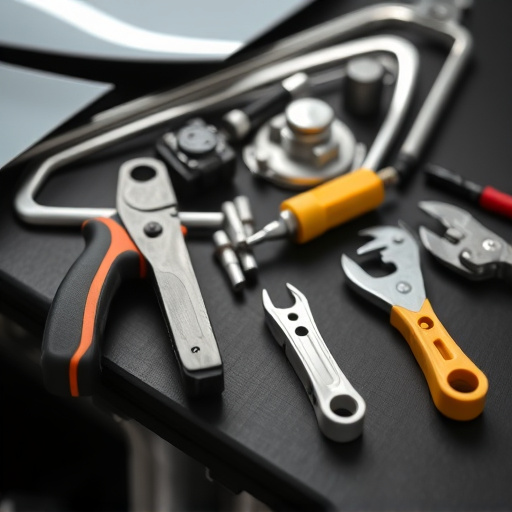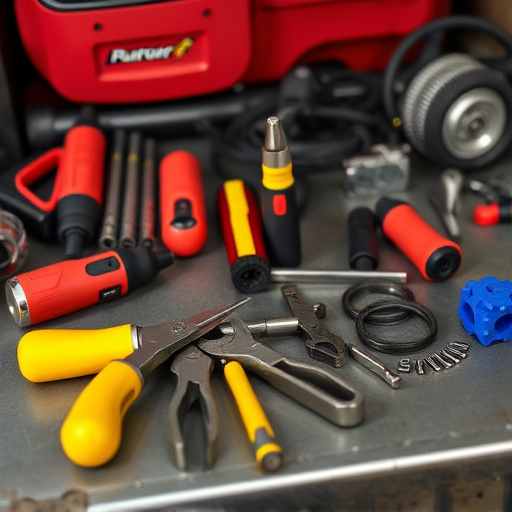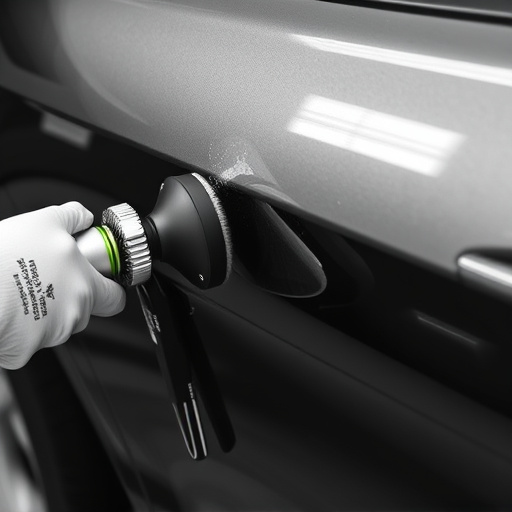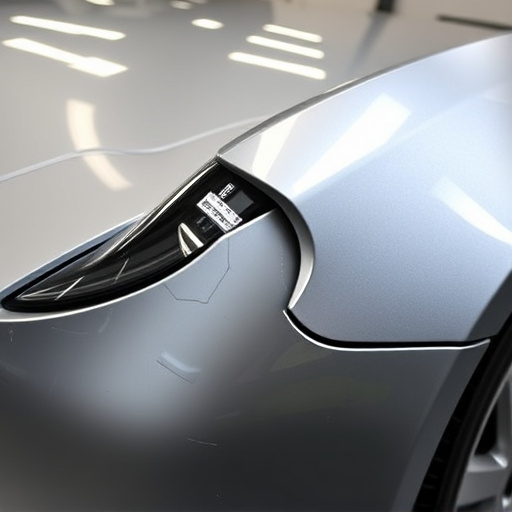The future of dog leg repair is significantly enhanced by advanced robotics, artificial intelligence, 3D printing, and regenerative medicine. These technologies offer more precise, faster, and personalized treatments, including custom prosthetics and splints, promising superior outcomes for canine patients. Integrating stem cell therapy and 3D printing could revolutionize dog leg repair, providing solutions comparable to top-tier human auto body work.
The field of canine orthopedics is experiencing a surge in innovation, particularly in technologies aimed at effective dog leg repair. This article delves into three primary future trends: regenerative medicine and bioprinting, pushing the boundaries of stem cell therapy and 3D printing for tissue and bone regeneration; surgical innovations, introducing advanced tools and minimally invasive techniques for precise and faster recovery surgeries; and personalized medicine, where genetic testing and data analytics drive tailored, effective treatment plans. These emerging paradigms promise to revolutionize dog leg repair, enhancing patient outcomes and quality of life.
- Emerging Technologies for Dog Leg Repair
- – Focus on advancements in regenerative medicine and bioprinting for dog leg repair.
- – Discuss the potential of stem cell therapy and 3D printing in creating new tissue and bone structures.
Emerging Technologies for Dog Leg Repair

The future of dog leg repair is looking promising with several emerging technologies set to transform traditional methods. One such innovation is the use of advanced robotics and artificial intelligence, which can enhance precision and speed during the repair process. These technologies enable more complex repairs, ensuring that dogs’ legs are restored to near-perfect condition, much like a top-tier auto body shop would achieve with car paint repair and body work.
Additionally, 3D printing is revolutionizing dog leg repair by allowing for customized, tailored solutions. This technology enables the creation of precise, biomechanically sound prosthetics or splints, offering a level of personalization that was previously unattainable. Just as a skilled auto repair shop uses advanced tools and materials to fix cars, these new methods promise to elevate dog leg repair to a whole new level, ensuring better outcomes for four-legged patients.
– Focus on advancements in regenerative medicine and bioprinting for dog leg repair.

The future of dog leg repair is looking bright with significant advancements in regenerative medicine and bioprinting technologies. These innovative approaches offer a promising alternative to traditional surgical methods, aiming to regenerate damaged tissue and promote self-healing in dogs. By leveraging the power of stem cells and 3D printing, veterinarians can create personalized treatments for various leg conditions, from ligament tears to bone fractures. This precision and customization are transforming the landscape of dog leg repair, moving away from rigid fixations towards dynamic, natural solutions that mimic the body’s own healing processes.
Bioprinting, in particular, has the potential to revolutionize auto body restoration techniques, which have long been applied to both human and canine patients. Similar to how collision repair services enhance car bodywork, bioprinting can precisely recreate complex structures like cartilage or bone, integrating them seamlessly into a dog’s leg. This not only accelerates healing but also reduces the risk of complications associated with foreign materials. As these technologies continue to evolve, we can expect even more sophisticated and effective dog leg repair solutions in the years to come.
– Discuss the potential of stem cell therapy and 3D printing in creating new tissue and bone structures.

The future of dog leg repair holds immense promise with emerging technologies like stem cell therapy and 3D printing. Stem cells offer a powerful tool to create new, healthy tissue and bone structures, potentially revolutionizing how we treat traumatic injuries or degenerative conditions in dogs’ legs. By harnessing their ability to differentiate into various cell types, researchers can develop regenerative medicine approaches tailored to specific needs.
Moreover, 3D printing complements this process by enabling the creation of custom-made scaffolds that serve as frameworks for new tissue growth. This technology allows for precise replication of natural bone and cartilage structures, enhancing the effectiveness of repair. Integrating stem cell therapy with 3D printing could lead to advanced dog leg repair solutions, mirroring the precision and efficiency often seen in car bodywork services for humans—from repairing minor dents to complex collision repair—and potentially transforming the quality of life for our canine companions.
As we look towards the future, the landscape of dog leg repair technologies is poised for a transformative shift. Advancements in regenerative medicine and bioprinting are paving the way for innovative solutions, offering hope for more effective and personalized treatments. Stem cell therapy and 3D printing technologies hold immense potential in reconstructing tissue and bone structures, potentially revolutionizing the field of canine orthopedics. These emerging trends promise improved outcomes and enhanced quality of life for dogs suffering from leg injuries, marking a promising new era in dog leg repair.














